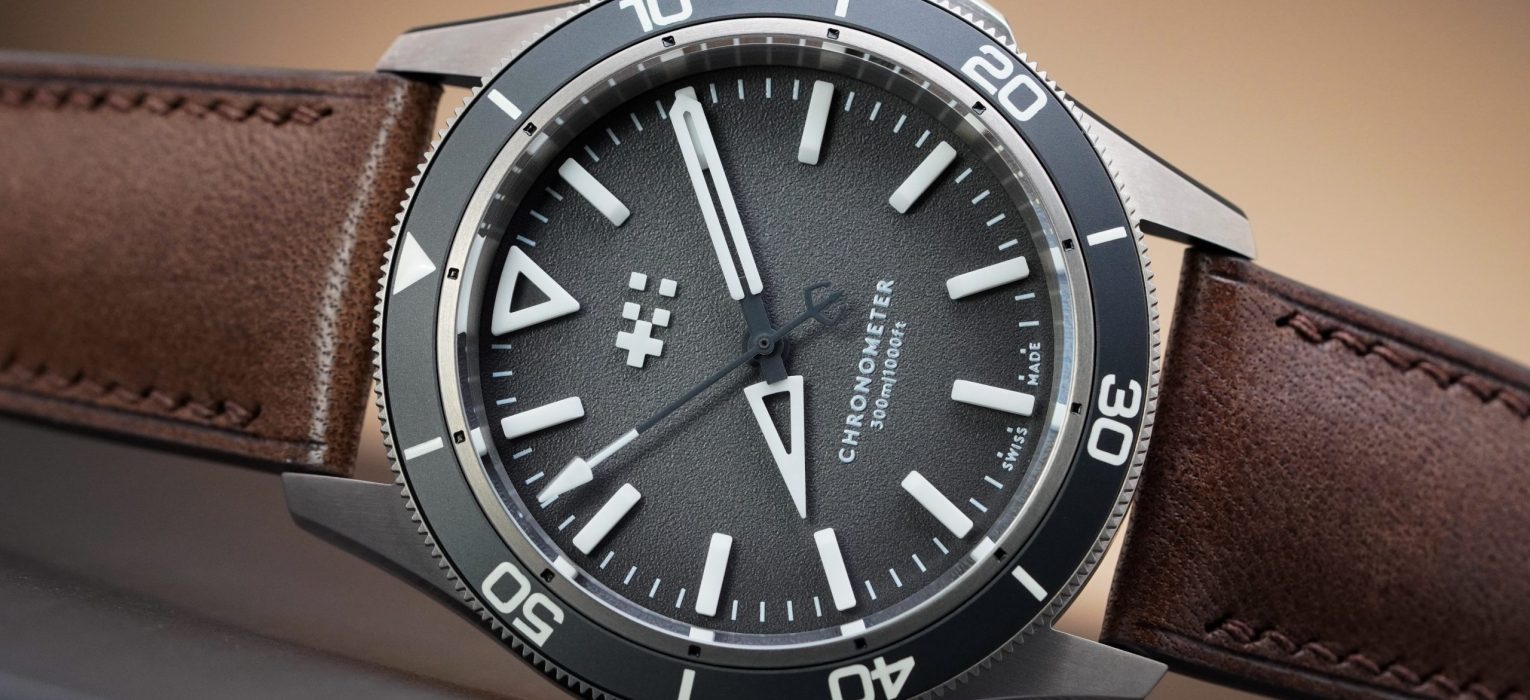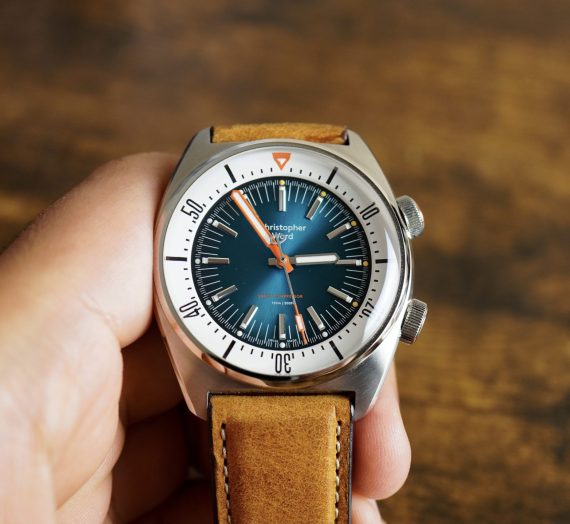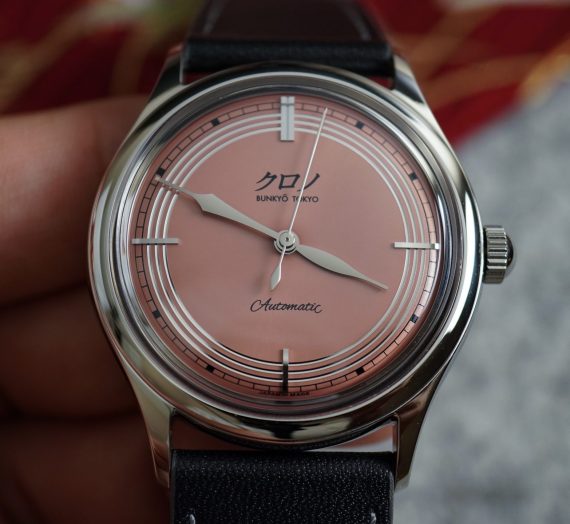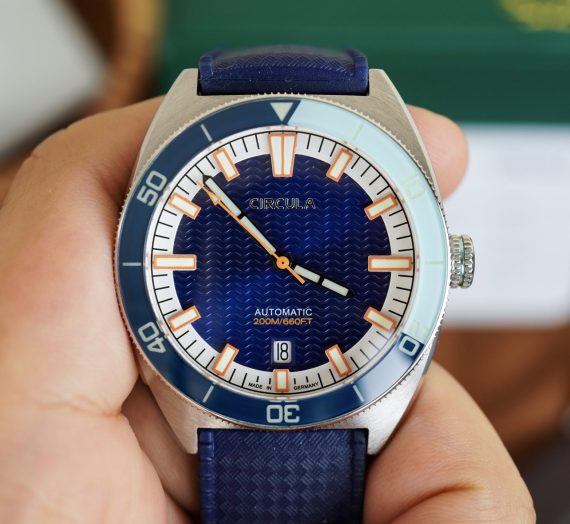Disclaimer: this article/video were not sponsored by Christopher Ward, or any other entity.
Video
Part 1: Case, Dial & Bracelet
Part 2: Lume & Movement
Review
It’s no secret that Christopher Ward is one of my favorite watch brands. Over the past few years, I’ve followed their releases closely, enjoying the opportunity to buy, borrow, and photograph many of their timepieces. As a fan of dive watches – despite not being a diver myself – I’ve developed a deep appreciation for the genre. These watches stand for robustness, engineering expertise, and the heritage of functional, utilitarian design, which once required watchmakers to bring their absolute best to the table.
Today, the dive watch market is over-saturated, with Kickstarter and other crowdfunding platforms teeming with generic designs that are lazy combinations of recognizable case and dial designs. And as the genre gets polluted with more and more sub par product, it becomes increasingly difficult for a relatively new brand to stand out without a well-established design heritage. Over my years reviewing watches, I’ve handled more than 200 timepieces, with more than 60% of them being dive watches. Through this experience, I’ve mentally compiled a list of features and specifications that I believe would make for the perfect dive watch. In my hypothetical scenario, that dream watch has a titanium case, measures 40 to 42mm in diameter, features a titanium bracelet with tool-free micro-adjustment, boasts excellent bezel action, is powered by a robust and accurate high-beat movement (I don’t consider the Sellita SW200-1 and ETA2824-2 to be robust enough after having to service nearly half a dozen of them over the last 2 years), and offers outstanding lume.

(checked off all boxes until I experienced the lume)

(Checks off most boxes, except for the bracelet and the Sellita SW200-1 movement)

(Checks off most boxes, except for the bracelet and the ETA 2824-2 movement)
In my search for this elusive timepiece, I’ve found (and purchased) several contenders, from the Tudor Pelagos 39 – slightly smaller than I prefer but still a strong option – to the H. Moser & Cie x Govberg Pioneer ‘Diver‘. These watches were priced at $4,700 USD and $19,900 USD respectively, reflecting my serious commitment to finding the right piece. However, I was left very disappointed with the Pelagos 39. Despite using a cutting-edge (Lumicast) luminescent material, Tudor stuck with traditional luminous pigment for the hands, which under-performed compared to the indices, and even under performed compared to other Tudor watches like the FXD MN I had at the time. As a result, I sold the watch after just a few weeks, despite its other excellent features.
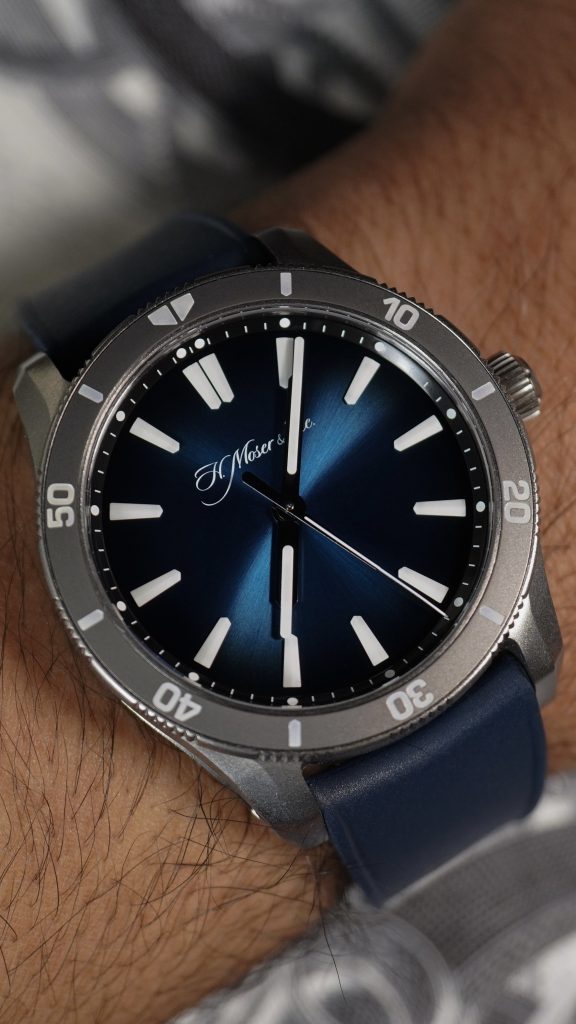
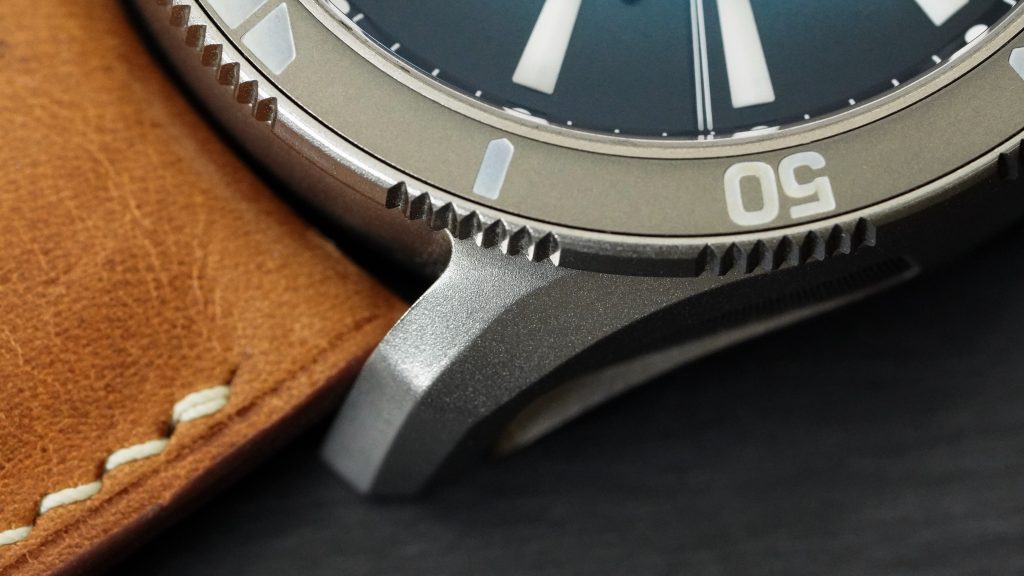
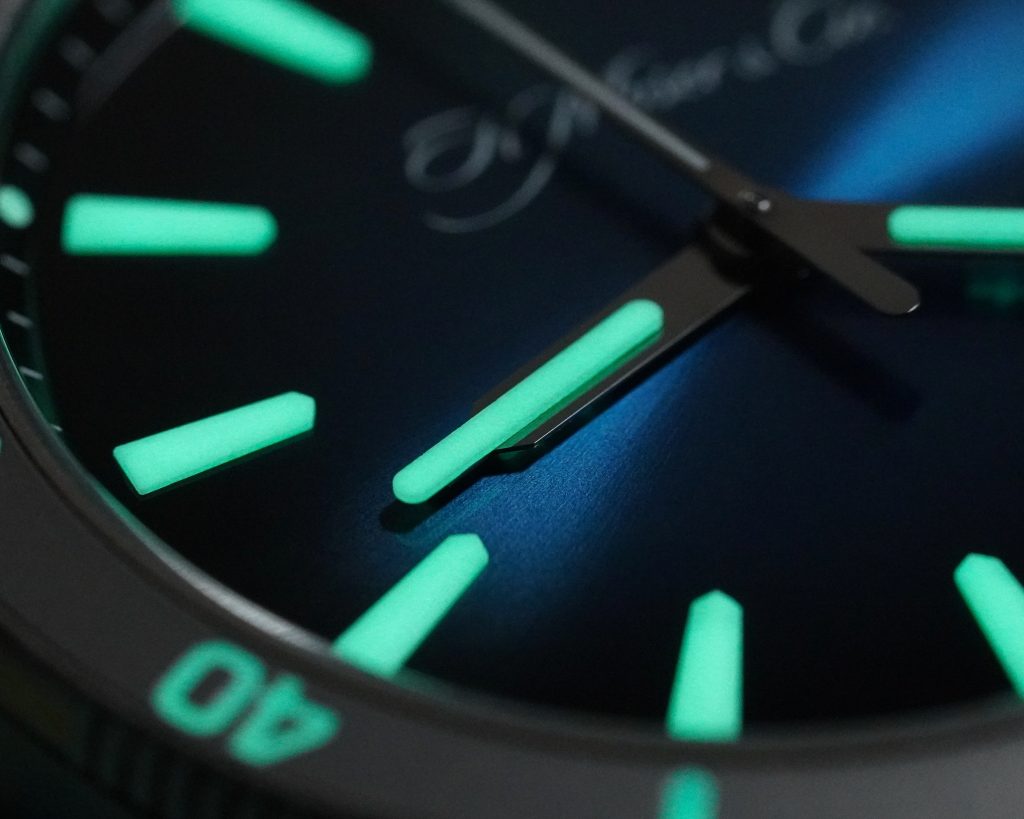
The H. Moser & Cie x Govberg Pioneer ‘Diver’ lasted longer in my collection – around six months. The matte titanium case and bracelet had a distinctive, Sinn-like aesthetic, and both the indices and hands used Globolight XP, another ceramic luminous material similar to Lumicast. Other watches using similar technology include the latest Sinn 903 chronograph at $4,160 USD and the MING 20.11 Mosaic, priced at CHF 14,500. While this ceramic luminous compound is slowly gaining popularity, most brands still rely on traditional lume applications for the hands. Ultimately, I parted with the Moser Pioneer as well. Despite its unique materials, the finishing felt mediocre, the bracelet underwhelming apart from the (amazing) clasp, and the movement’s performance was underwhelming, with a low beat rate and no lume on the seconds hand. Though it took six months to realize, the Pioneer was not my dream dive watch either.
When I received the press release for the Christopher Ward C60 Trident Lumiere, I immediately paid attention. I recognize that at $2390 USD the C60 Trident Lumière has to prove itself worthy of such a hefty premium over the regular lineup of C60 Trident watches. But this watch checked all the boxes for me, and, as trivial as it might seem to many collectors, the Globolight XP tipped seconds hand was a major selling point for me – especially considering that my Moser, at nearly nine times the price, didn’t have this. (Yes, I’m a child that is impressed by glowing things and I’m not ashamed) I’ve had the black C60 Trident Lumiere for just under 10 days, so I won’t declare it my perfect dive watch just yet. However, I’ll be comparing and contrasting it with my experiences with the Pelagos 39 and the Govberg Pioneer wherever relevant.
Let’s check it out!
Case
The case of the Lumiere is meticulously designed, measuring 40.85mm in diameter from 2 o’clock to 8 o’clock. However, due to its dedicated crown guard setup, it’s worth also noting the 3 o’clock to 9 o’clock measurement, including the crown, which comes to 44.10mm. The lug tip-to-lug tip distance is 47mm, but with the male end links included, this extends to 53mm. The thickness of the case is an impressive 11.10mm, though it feels and appears even slimmer thanks to the refined mid-case design and the subtly integrated case-back.

The entire case is constructed from Grade 2 Titanium, a choice likely made to keep costs down. While Grade 2 Titanium is more prone to scratches compared to the more durable Grade 5, it fits the purpose of a lightweight, everyday watch. Personally, I don’t mind if the watch accumulates wear over time, as I expect to use it frequently and expect it to be covered in scratches in no time. The case design is new but draws heavily on Christopher Ward’s established Light Catcher aesthetic, a design language that has proven both functional and visually appealing.
The case features primarily brushed surfaces, with wide, polished bevels running along the sides and down through the lugs, giving it a sophisticated finish. The quality of both the brushing and polishing is excellent, showcasing the brand’s attention to detail. The case has a lug width of 22mm, and on bracelet tapers to just over 16mm.

Unlike the integrated, tapered crown guard design found on other Trident models, the Lumiere uses a modular crown guard system, more similar to the Twelve series. These angular crown guards are attached to the mid-case and are adorned with generous polished bevels and surfaces. The 6.35mm screw-down crown is easy to grip and operate, featuring the brand’s logo in relief on the top, with a matte finish at the base, enhancing both form and function.
The watch is equipped with a 120-click unidirectional dive bezel, primarily brushed, with a matte ceramic insert featuring fully lumed markers. The design is consistent with other Trident models, with a fixed inner ring marked at five-minute intervals. The bezel action is surprisingly smooth and refined for a titanium watch, providing a luxurious tactile feedback that enhances the overall feel.

A unique feature of this watch is the helium release valve, discreetly placed at the 9 o’clock position and integrated into the mid-case. While the practical need for this feature may be limited to the 0.001% of Lumiere owners, it adds to the watch’s technical prowess and dive-ready credentials.
Turning the watch over, you’ll find a screw-down case-back with a sapphire exhibition window, providing a view of the movement. The watch is rated for up to 300 meters of water resistance, making it well-suited for serious diving, despite its sleek profile.
Overall, as with other recent Christopher Ward releases, the design, fit, and finish of the Lumiere’s case are exceptional. The 11.10mm thickness is particularly impressive, as the clever integration of the mid-case, bezel, and case-back design makes it feel significantly thinner – more like a watch under 10mm. The result is a watch that feels sleek and refined on the wrist. In my view, this case design is more impressive than that of the watch it seems most frequently compared with, the Tudor Pelagos 39, delivering a level of comfort and elegance that will definitely exceed expectations.
Dial
I chose the black dial option for the Christopher Ward Lumière, although blue and orange variants are also available. That said, calling it “black” might be a bit misleading, as the color is closer to a grey or anthracite tone. The base of the dial features a pebbled texture, a design choice that’s becoming increasingly popular across a wide range of watches. What makes this texture particularly interesting is that it’s not fully matte; it has a subtle shine, adding depth and dimension to the dial without being overly reflective or distracting.

Surrounding the dial is a printed white outer minute / seconds track, with clear and precise printing that enhances legibility. The proportions are well-balanced, making the dial easy to read at a glance, even with the textured surface. All the dial elements are made from Globolight XP, a ceramic luminous compound that stands apart from traditional luminous applications. Rather than using steel indices filled with lume, the hour markers themselves are entirely composed of luminous material. While the hour markers might initially seem like simple rectangles, a closer look reveals intricate detailing: a sloped front surface and all beveled edges, similar to Christopher Ward’s more conventional applied indices. This level of detail is particularly impressive given the complexity of working with ceramic luminous materials like Globolight XP – especially when most of these details are almost imperceptible to the naked eye.


The 12 o’clock triangle marker pays homage to the design introduced on the C60 Concept watch, and perhaps the most striking feature is the twin-flag logo beneath it. Like the hour markers, the logo is also made of Globolight XP, which is remarkable. Christopher Ward had previously impressed me with their applied steel logo that required precise alignment with six points of contact on the dial. Now, they’ve taken that same precision and executed it in luminous ceramic – a feat of both design and engineering. At the 6 o’clock position, “Chronometer” is printed in a bold font, signaling the presence of a COSC-certified movement, with the water resistance rating printed just below it.


However, the true standout of the dial is the hand set. The Lumière takes the familiar Trident handset and re-imagines it in Globolight XP. The ‘competitors’, such as the Pelagos, use standard lume for their hands, while others like Moser and Sinn opt for simpler, blockier designs. In contrast, Xenoprint AG, the company responsible for producing these Globolight XP components, has managed to craft a complex handset, fixing the luminous material to a skeletal frame beneath. This meticulous craftsmanship extends even to the seconds hand, where the tip is also made from Globolight XP – a detail that sets this watch apart.
For someone who has closely followed the evolution of LumiCast, Globolight, and HyCeram technologies, I must commend both Xenoprint and Christopher Ward for executing such an intricate design so well. The result is a dial that not only excels in its lume performance but also in its attention to detail and innovation.
Lume
As previously mentioned, the dial elements on the Christopher Ward Lumière are made entirely from Globolight XP, a ceramic luminous compound, while the bezel insert uses more traditional liquid and epoxy-based lume. Before diving into performance, it’s worth noting that the 3D nature of these Globolight elements creates a stunning aesthetic in the dark. Unlike applied indices that only have lumed top surfaces, the full 3D volume of these ceramic markers glows, offering a more immersive and impressive visual experience.

In terms of lume performance, the Globolight XP elements provide a significant advantage. Because they offer more surface area than traditional lume-filled indices, they emit a brighter and more visible glow. Additionally, the density of these ceramic luminous materials contributes to enhanced longevity, ensuring that the lume remains visible for longer durations.

While I’m sure it’s possible to find watches with traditional lume applications that are brighter or last longer – such as models with larger lume plots or fully lumed dials – when comparing similarly sized indices, the advanced ceramic compounds like Globolight, Lumicast, and HyCeram are likely to outperform traditional lume in both brightness and longevity.

In my lume video, I compared the Lumière against several other watches: the Zelos Thresher Worldtime GMT with Lumicast numerals, the Nodus Avalon II Bronze with traditional lume, a Grand Seiko SBGA231 diver, the Tudor Black Bay 41 Monochrome, and the MING 20.11 Mosaic. The Lumière stood out as one of the top performers in the 20-minute time-lapse, with its closest competitor being the MING 20.11 Mosaic. Interestingly, the Nodus Avalon II Bronze showed strong initial brightness but tapered off more quickly, particularly with the hands becoming difficult to read, while the MING remained competitive with the Lumière throughout.
Movement
If we continue my game of me personally specifying components for my ideal dive watch, if I were to choose a movement within the sub-$8k range, my first pick would be the Master Chronometer Kenissi MT5602-U. Unfortunately, that movement isn’t available to third-party manufacturers, so my next choice would be the COSC certified Sellita SW300, and that’s exactly what Christopher Ward has opted for in this model. The SW300 is one of the most premium, accurate, reliable, and slim movements available in this price bracket, at least from my experience owning and handling hundreds of similarly priced watches over the years.
Moving away from the more common Sellita SW200 is a welcome change, and I’m pleased to see Christopher Ward adopting the SW300 in many of their recent releases, such as the Twelve Ti and the latest Super Compressor Elite. The SW300 offers a higher level of refinement, and its slim profile usually enhances the overall wear-ability of the watch its cased in.

This particular SW300 is the highest grade available, and it has been COSC-certified to maintain a precision of −4/+6 seconds per day. In addition to this, it has been tested and certified for performance under thermal variations, ensuring reliable accuracy under a range of conditions. After a little over a week of wearing this watch, I’ve observed that it is operating well within these bounds, staying impressively close to +1 second per day.
The only change I might’ve suggested for this watch would be the elimination of the exhibition case-back. While most may enjoy the opportunity to see the movement at work, I don’t find it necessary on a tool watch designed for rugged use. Additionally, the Sellita SW300, while dependable, doesn’t offer the kind of visual appeal that makes an open case-back essential to me. That said, I understand the appeal for most enthusiasts (who haven’t been desensitized by seeing this movement a million times already), and it doesn’t detract significantly from the overall experience at all.
Wrist & Bracelet
One of the standout aspects of the Christopher Ward Lumiere is how it feels on the wrist. While it’s difficult for me to fully convey this through words, this watch just fits naturally and comfortably, as if it was made to be there. This is largely due to a combination of clever design, lightweight materials, excellent proportions, and a well-balanced case head and bracelet.


With a 40.85mm diameter and a 47mm lug-to-lug width, the watch fits my 6.75″ wrist comfortably. However, the true highlight is the 11.10mm case height. The case is sculpted with a flat case-back that sits evenly and perfectly balanced on the wrist, contributing significantly to its impressive wear-ability.
On the bracelet, the lug-to-lug tip distance effectively expands to 53mm when factoring in the end links, but practically speaking, the wear feels closer to 49-50mm. For wrist sizes below 6″, I would recommend opting for the rubber strap option to ensure a better fit. However, for wrist sizes 6.5″ and above, the bracelet should provide a comfortable fit.


The bracelet itself has undergone a notable improvement compared to the regular Trident series, which were already excellent. The links now feature polished bevels along the sides and seem to have a softer, more rounded articulation, which could also be due to the titanium material. This makes the bracelet feel fluid and more comfortable during wear. However, an unusual addition to this bracelet design is the fact that the end links now extend beyond the limits of the case by at least 1mm. This looks a bit unpleasant when seen in isolation (akin to the protruding end links on the previous generation of Rolex Platinum Daytona).


One significant upgrade is the clasp. It appears slightly shorter in length (mostly imperceptible) and features polished bevels that match the bracelet links, offering a more cohesive and refined look. While the clasp design remains visually similar to the previous generation, it now includes a push-button adjustment mechanism, replacing the older pull tab system.
Watch Industry Drama Sidebar
There has been some debate about this design, with Nodus claiming it resembles their NodeX system. If I’m not mistaken, Christopher Ward had an adjustable clasp in their watches before the NodeX hit the market. However, Nodus claim that they were the first to use a modular extension components that can be integrated into any clasp, and indicate that Christopher Ward has approached this clasp design with similar attributes. The components within the Christopher Ward clasp do look modular, but without a patent on this idea, or proof that it was copied, suggesting that Christopher Ward used their design of a modular extension module seems to be a stretch. But enough of my thoughts on this, let’s get back to the review.

Overall, the bracelet is well-built, with excellent finishing and a comfortable fit. The new push-button adjustment system is a welcome addition, although I never found any issues with the previous design. Whether you’re wearing the watch on the bracelet or the rubber strap, the Lumiere delivers a well-balanced and enjoyable wearing experience.
Wrapping Up
This has been an extensive and detailed review, so I’ll keep the conclusion brief. Simply put, the Christopher Ward C60 Trident Lumière goes above and beyond, offering an experience that surpasses the already impressive Trident line of watches, which I consider some of the best value dive watches on the market.
At $2,390 on the bracelet, the price is admittedly a tough pill to swallow for anyone seeking an accessible titanium dive watch. This price point starts to overlap with pre-owned Tudor territory, and Tudor brings with it a rich history and more advanced movements in this range. However, don’t be too quick to assume that Tudor delivers a significantly better-built or better-finished watch. And I say this as a fan of Tudor, currently owning two of their models and planning to add a third to my collection soon.
Aside from the movement, I personally find the Lumière to be a more compelling option than the Pelagos 39, even ignoring the fact that it costs nearly half the price of a Pelagos 39. I know that may be a controversial take, and I fully expect most of you to disagree, but until Tudor addresses the lume performance on their hands, my stance remains firm. For now, I’ll continue to enjoy the Lumière, though I’m sure I’ll soon be hunting for flaws in an attempt to justify cycling it out of my collection and starting this process all over again. Because watch collecting is equal parts a hobby and a mental affliction.

